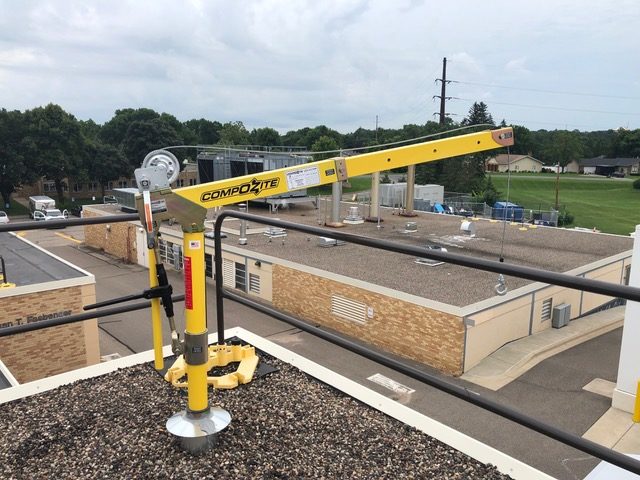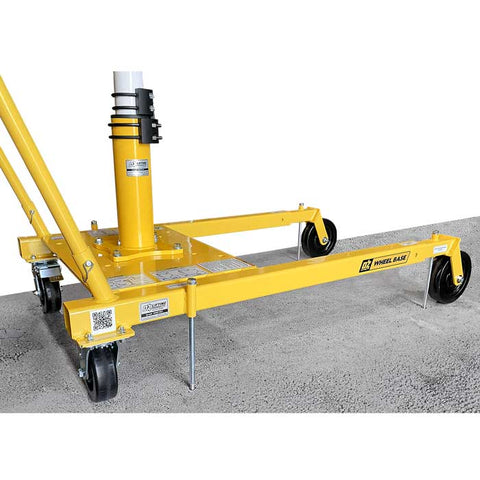Discover everything you need to know about davit cranes
Davit cranes are essential pieces of equipment used in various industries for lifting and moving heavy loads. Whether you're working in construction, manufacturing, or transportation, understanding the basics of davit cranes is crucial for safe and efficient operations. In this guide, we will delve into the definition, types, key components, and selection process of davit cranes. We will also cover the installation and setup, safe operation, and troubleshooting of common problems. By the end of this comprehensive guide, you'll have a solid understanding of davit cranes and how to choose, install, and operate them effectively.
Understanding Davit Cranes
Definition and Basic Functionality
First and foremost, let's start with the definition of davit cranes. A davit crane is a portable lifting device that consists of a vertical mast, an extension arm, and a winch or hoist mechanism. These cranes are primarily used to lift and lower heavy objects that cannot be moved manually. They provide a versatile and flexible solution for various lifting applications.
The basic functionality of a davit crane involves the rotation of the arm around the mast, allowing for the positioning of the load at the desired location. The winch or hoist is responsible for lifting and lowering the load, with precise control provided by the operator.
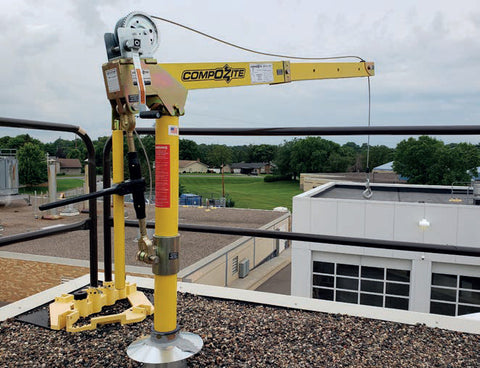
Types of Davit Cranes
Now that we understand the fundamental concept of davit cranes, let's explore the different types available in the market. Davit cranes can be categorized into several types based on their design, capacity, and specific use.
- Portable Davit Cranes: These are lightweight and easily transportable cranes that can be used in various locations. They are ideal for tasks that require frequent crane movement and setup.
- Fixed Davit Cranes: As the name suggests, fixed davit cranes are permanently installed in a specific location. They provide a more stable lifting solution and are commonly used in industrial settings.
- Telescopic Davit Cranes: These cranes feature an extendable arm, allowing for increased reach and flexibility. Telescopic davit cranes are well-suited for applications where variable lifting heights are required.
- Jib Davit Cranes: Jib davit cranes have a horizontal jib arm attached to the vertical mast. This configuration offers a greater range of motion, making them useful for maneuvering loads in confined spaces.
- Manual and Electric Davit Cranes: Davit cranes can be operated manually or powered by electric motors. Manual cranes are suitable for lighter loads and tasks that require precise control. Electric cranes are more efficient for heavier loads and repetitive lifting operations.
Key Components of a Davit Crane
A davit crane comprises several essential components that work together to enable lifting operations. Understanding these key components will help you make informed decisions when choosing a davit crane.
- Mast: The mast is the vertical support structure that provides stability to the crane. It is usually made of steel or aluminum and is designed to withstand the load capacity of the crane.
- Arm: The arm, also known as the boom or jib, extends horizontally from the mast. It is responsible for carrying the load and rotating around the mast. The arm's length and design depend on the specific requirements of the lifting application.
- Winch or Hoist: The winch or hoist mechanism is a critical component that enables the lifting and lowering of loads. It consists of a drum, cable, and motor. The winch or hoist is responsible for applying the necessary force to lift the load safely.
- Base or Mounting: The base or mounting provides the foundation for the davit crane. It ensures stability and prevents the crane from toppling over during lifting operations. Depending on the type of davit crane, the base can be portable, fixed, or wall-mounted.
- Controls: Controls include buttons, levers, or remote devices that allow the operator to control the crane's movements. Proper control systems are essential for safe and precise operation.
Now that we have covered the basics of davit cranes, let's move on to the next section to learn about the factors to consider when choosing the right davit crane for your specific needs.
Choosing the Right Davit Crane
Factors to Consider
When selecting a davit crane, several factors need to be taken into account to ensure it meets your requirements. Here are some key considerations:
- Load Capacity: Determine the maximum weight you need to lift with the davit crane. It is crucial to select a crane that can handle the intended load without exceeding its capacity.
- Reach and Height: Evaluate the required reach and lifting height for your lifting operations. Consider the dimensions and weight of the objects you will be lifting to determine the appropriate arm length and crane height.
- Space Limitations: Assess the available space in your worksite or facility. Consider the dimensions of the crane, including its base, mast, and arm, and ensure that it can be accommodated without interfering with other operations or structures.
- Environmental Factors: Take into account the working environment, including weather conditions and temperature extremes. If the crane will be exposed to corrosive substances or harsh elements, select a crane with appropriate corrosion-resistant materials.
- Safety Features: Look for davit cranes that come with essential safety features such as overload protection, emergency stop buttons, and limit switches. These features help prevent accidents and protect both the operators and the loads being lifted.
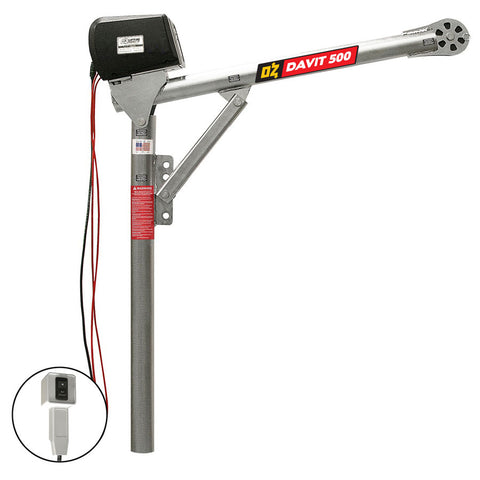
Common Mistakes to Avoid
When choosing a davit crane, it's essential to avoid common mistakes that can lead to inefficiencies or safety risks. Here are some common mistakes to steer clear of:
- Underestimating Load Capacity: Do not underestimate the weight of the loads you will be lifting. It is crucial to select a crane with a sufficient load capacity to ensure safe and efficient lifting operations.
- Neglecting Height and Reach Requirements: Failing to consider the required lifting height and reach can result in crane configurations that do not meet your specific needs. Double-check the dimensions and measurements to avoid any miscalculations.
- Skipping Site Assessments: Always perform a site assessment before purchasing a davit crane. Failure to assess the worksite can lead to improper crane selection, hindering operations or causing damage to structures.
- Ignoring Maintenance and Inspection Requirements: Regular maintenance and inspections are crucial for the safe and reliable operation of davit cranes.
Neglecting these responsibilities can lead to costly repairs and compromise the safety of operators and loads.
Now that you understand the important factors to consider when choosing a davit crane and the common mistakes to avoid, let's move on to the next section to learn about the installation and setup process.
Installation and Setup of Davit Cranes
Pre-Installation Checklist
Prior to the installation of a davit crane, it is essential to follow a pre-installation checklist to ensure a successful and safe setup. Here's a step-by-step guide:
- Evaluate the location: Assess the installation site to ensure it is suitable for the chosen davit crane. Consider factors such as ground stability, overhead clearance, and proximity to other structures.
- Check permits and regulations: Verify if any permits or regulations are required for the installation process. Local authorities may have specific guidelines that need to be followed.
- Verify load capacity: Confirm that the chosen installation site can support the maximum load capacity of the davit crane. The ground or structure must be able to withstand the forces exerted during lifting operations.
- Gather necessary tools and equipment: Prepare all the required tools, equipment, and safety gear needed for the installation process. This includes wrenches, bolts, anchors, and personal protective equipment.
- Review manufacturer's instructions: Carefully read and understand the manufacturer's instructions for installing the specific davit crane model you have chosen. Follow the guidelines provided to ensure a proper installation.
Step-by-Step Installation Guide
Once you have carefully completed the pre-installation checklist, you can begin the installation process. Here is a step-by-step guide:
- Prepare the base or mounting: If your davit crane requires a base or mounting, ensure it is properly positioned and secured. Follow the manufacturer's instructions for anchor bolt placement and tightening.
- Attach the mast: Connect the mast to the base or mounting, ensuring a secure and stable connection. Use appropriate fasteners and tighten them according to the manufacturer's specifications.
- Install the arm: Attach the arm or jib to the mast, ensuring it is aligned properly and securely connected. Follow the manufacturer's instructions for proper assembly and tightening.
- Mount the winch or hoist: Install the winch or hoist mechanism on the designated section of the davit crane. Ensure it is correctly aligned and securely mounted. Connect the control cables or wires according to the manufacturer's instructions.
- Perform load tests: Once the installation is complete, conduct load tests to verify the crane's stability and functionality. Gradually apply increasing loads to ensure the crane can handle the designated capacity.
- Complete final checks: After successful load tests, inspect all components for proper installation, alignment, and operation. Double-check all fasteners, wires, and connections. Make any necessary adjustments or repairs before putting the crane into service.
Proper installation and setup of a davit crane are crucial for safe and efficient operations. By following the pre-installation checklist and step-by-step installation guide, you can ensure a successful setup that meets your lifting requirements.
Operating Davit Cranes Safely
Safety Measures and Precautions
Operating a davit crane safely is essential to prevent accidents and injuries. Here are some key safety measures and precautions to follow:
- Operator Training: Ensure that operators are properly trained in the safe operation of davit cranes. Training should cover crane controls, load capacity, safe lifting techniques, and emergency procedures.
- Personal Protective Equipment (PPE): Operators should wear appropriate PPE, including hardhats, safety glasses, gloves, and high-visibility vests. PPE helps protect against potential hazards and increases visibility in the work area.
- Load Limitations: Adhere to the load capacity limits specified by the manufacturer. Never exceed the designated capacity to prevent overloading and potential crane failure.
- Proper Load Rigging: Ensure that loads are properly rigged using appropriate slings, straps, or hooks. Inspect rigging equipment regularly for wear and tear, and replace any damaged components immediately.
- Clear Communication: Maintain clear communication between the crane operator and other personnel involved in the lifting operation. This includes using hand signals, radios, or other reliable communication methods.
- Secure the Work Area: Keep the work area clear of obstacles, debris, and personnel not involved in the lifting operation. Restrict access to the immediate vicinity to prevent accidents due to falling objects or unauthorized entry.
- Regular Inspections and Maintenance: Conduct routine inspections of the davit crane to identify any potential issues or worn-out components. Follow the manufacturer's recommended maintenance schedule and promptly address any maintenance or repair needs.
By following these safety measures and precautions, you can minimize the risk of accidents and create a safe work environment when operating davit cranes.
Troubleshooting Common Davit Crane Problems
Identifying Issues
Despite proper maintenance and operation, davit cranes may encounter occasional problems. Identifying these issues promptly is crucial for resolving them before they escalate. Here are some common problems to watch out for:
- Motor Failure: If the motor fails to start or displays erratic behavior, it may be due to electrical or mechanical issues. Inspect the motor for loose connections, damaged wires, or worn-out components. Consult the manufacturer's troubleshooting guide for specific motor problems.
- Slipping Load: A load that slips during lifting may indicate a problem with the winch or hoist mechanism. Check the winch cable for any signs of wear, kinks, or damage. Ensure that the cable is properly wound on the winch drum and that the brake system is functioning correctly.
- Crane Instability: If the crane feels unstable during operation, it may be due to improper installation or a loose connection. Inspect all fasteners and connections for proper tightness. Verify that the crane's base or mounting is secure and stable.
- Control Malfunctions: Control-related issues can include unresponsive buttons, erratic movements, or loss of power. Check the control cables or wires for any damage, loose connections, or wear. Test the control panel or remote device on another compatible crane to determine whether the problem lies with the controls or the crane itself.
It's important to address these issues promptly to prevent further damage or potential safety hazards. If you encounter any problems that you're unable to resolve, consult the manufacturer's troubleshooting guide or contact their technical support for assistance.
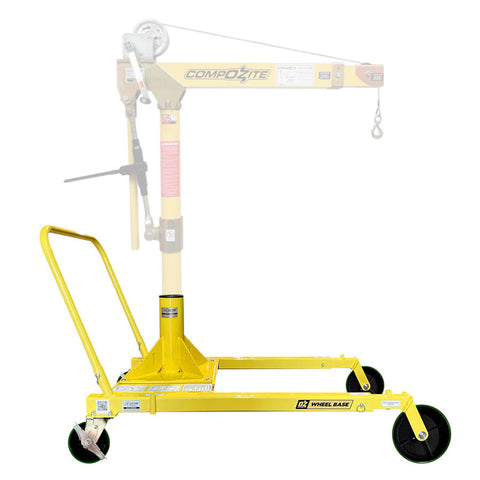
Basic Troubleshooting Tips
While some davit crane problems may require professional assistance, there are a few basic troubleshooting tips you can try before calling for service:
- Check Power Supply: Ensure that the crane is receiving a stable power supply and that the power source is not the cause of the issue. Test the power outlet or electrical connection with other devices to verify its functionality.
- Clean and Lubricate: Dirt, debris, or lack of lubrication can cause mechanical problems. Regularly clean the crane and lubricate moving parts according to the manufacturer's recommendations.
- Inspect Limit Switches: Limit switches are safety devices designed to cut off power when specific positions or limits are reached. Inspect the limit switches for any obstructions or misalignment that may prevent them from functioning correctly.
- Reset Circuit Breakers: If the crane suddenly stops working, check the circuit breakers or fuses for any tripped or blown components. Reset or replace them as necessary.
If these basic troubleshooting tips do not resolve the issue, it is best to seek professional assistance to avoid further complications or damage to the crane.
Conclusion
Davit cranes are versatile and powerful lifting devices used in various industries. By understanding their functionality, important considerations, and safety measures, you can effectively choose, install, and operate them to meet your lifting needs. Remember to always prioritize safety and regular maintenance to ensure the longevity and reliability of your davit crane.

